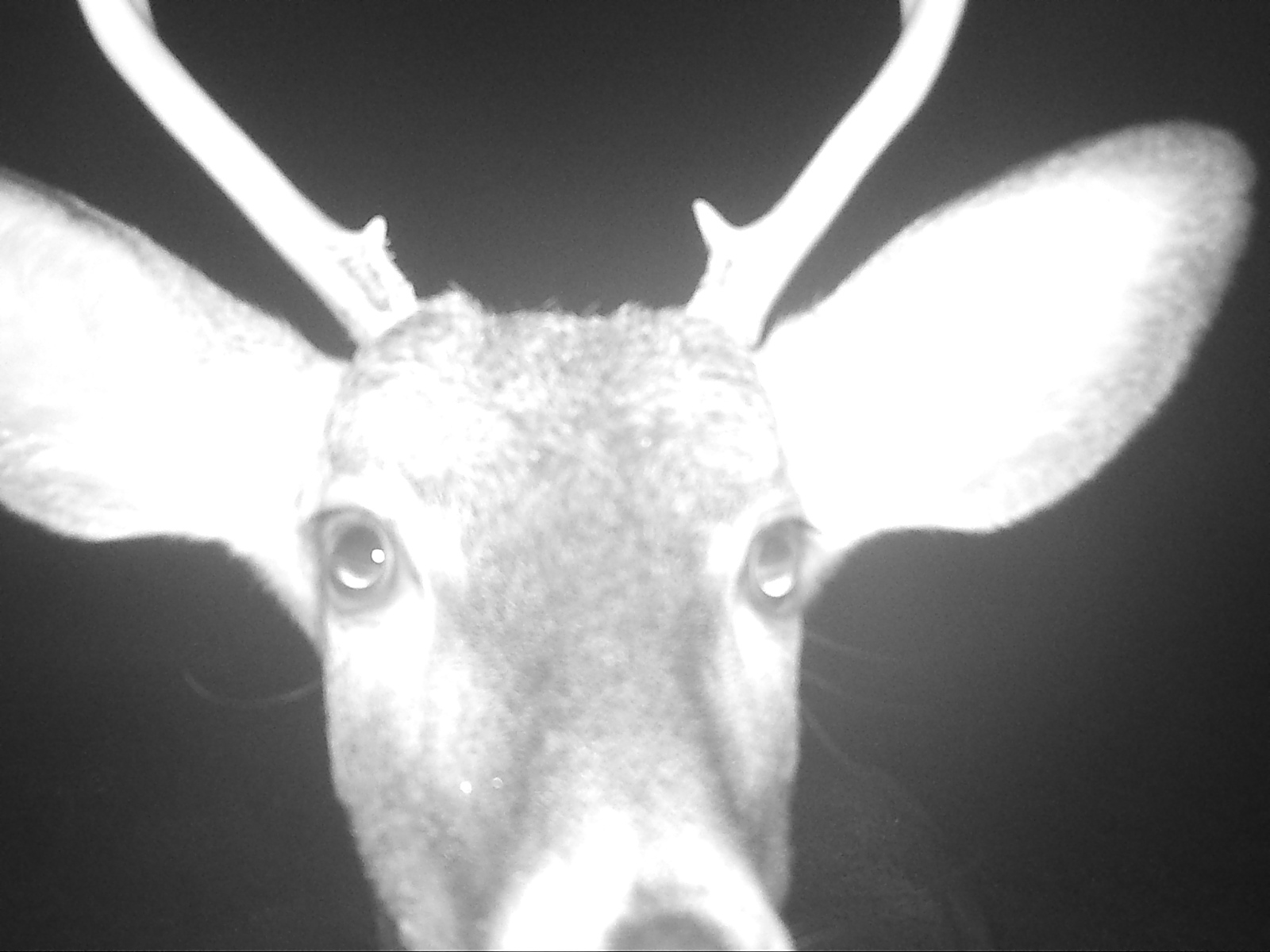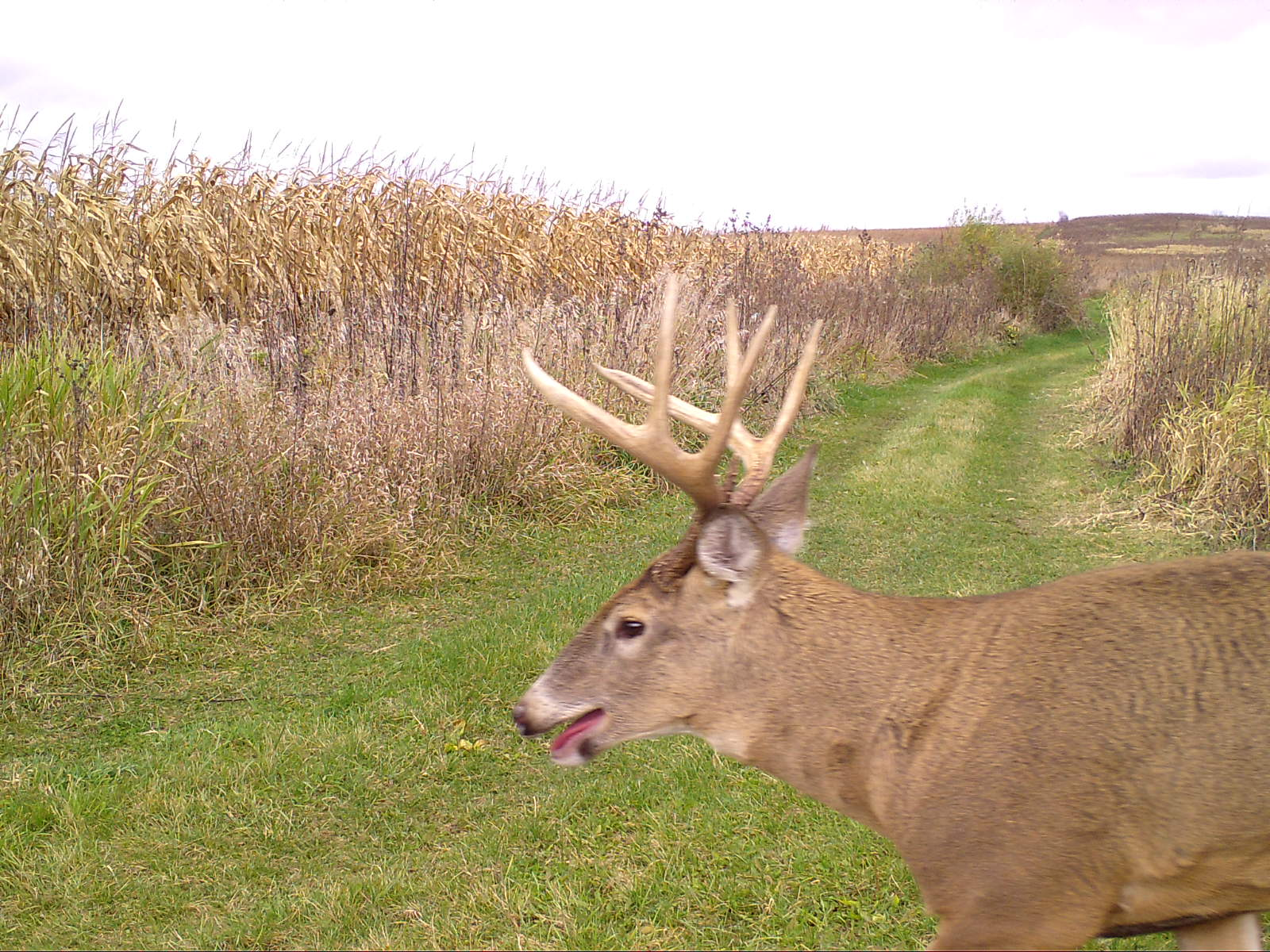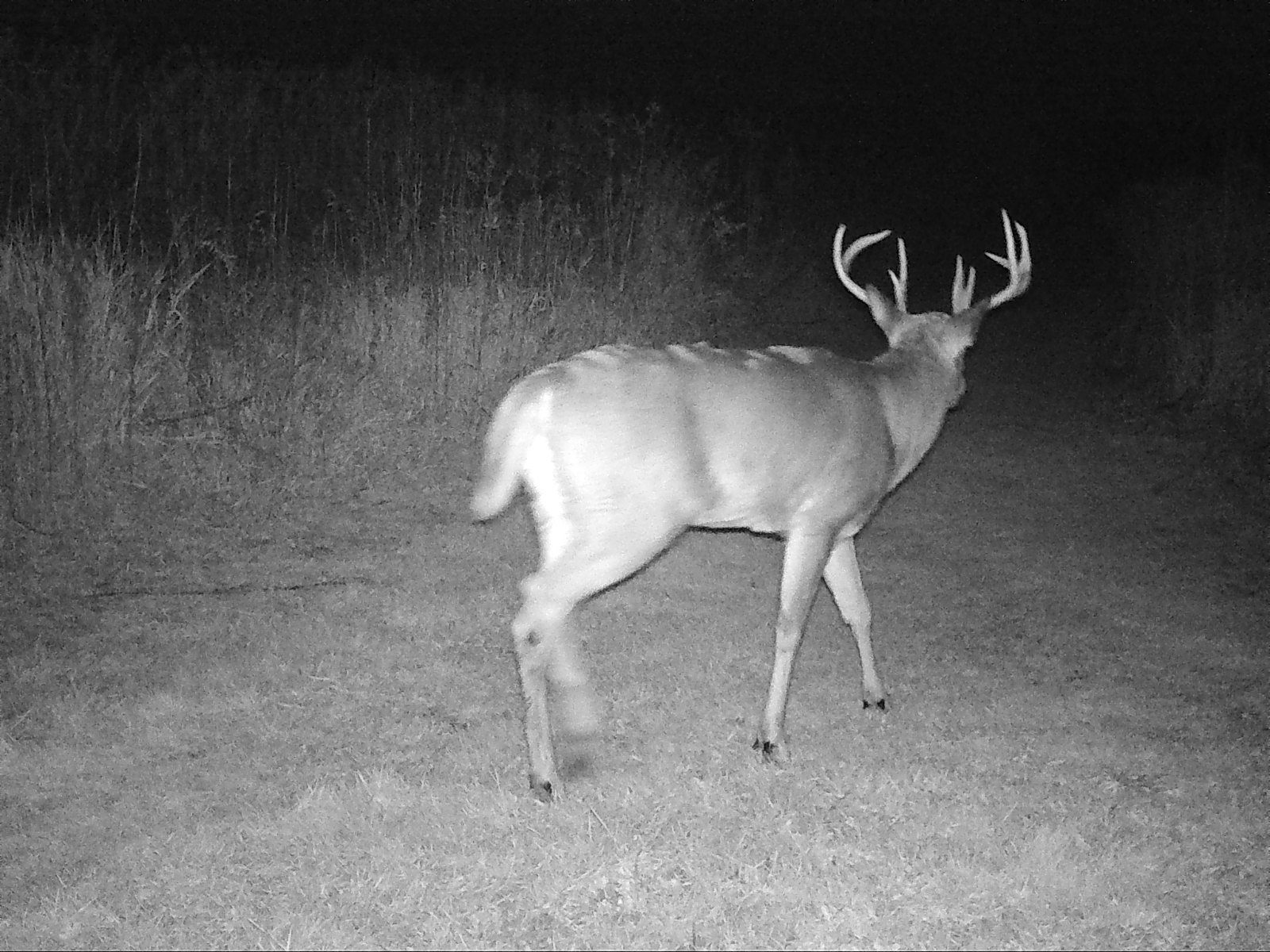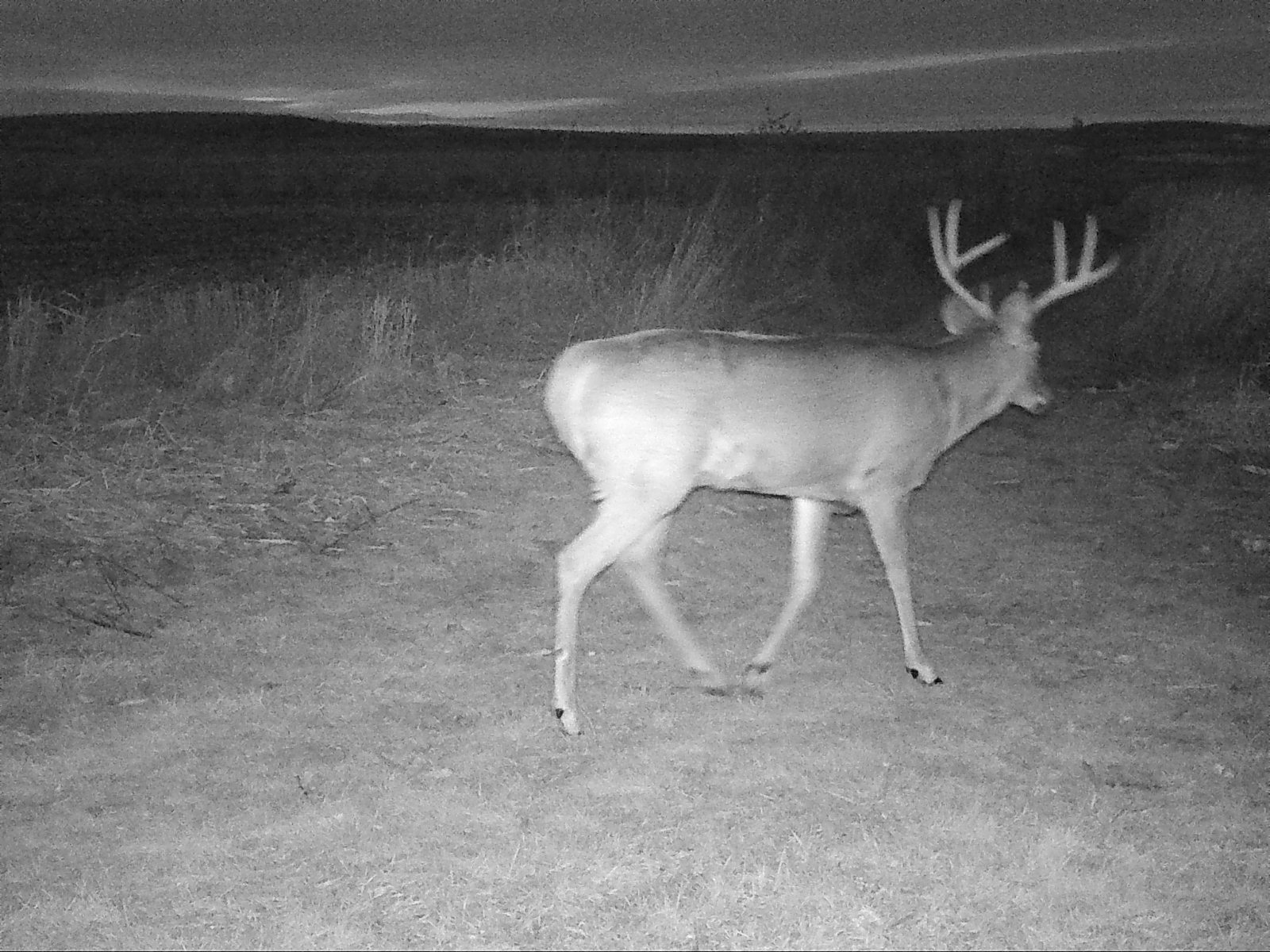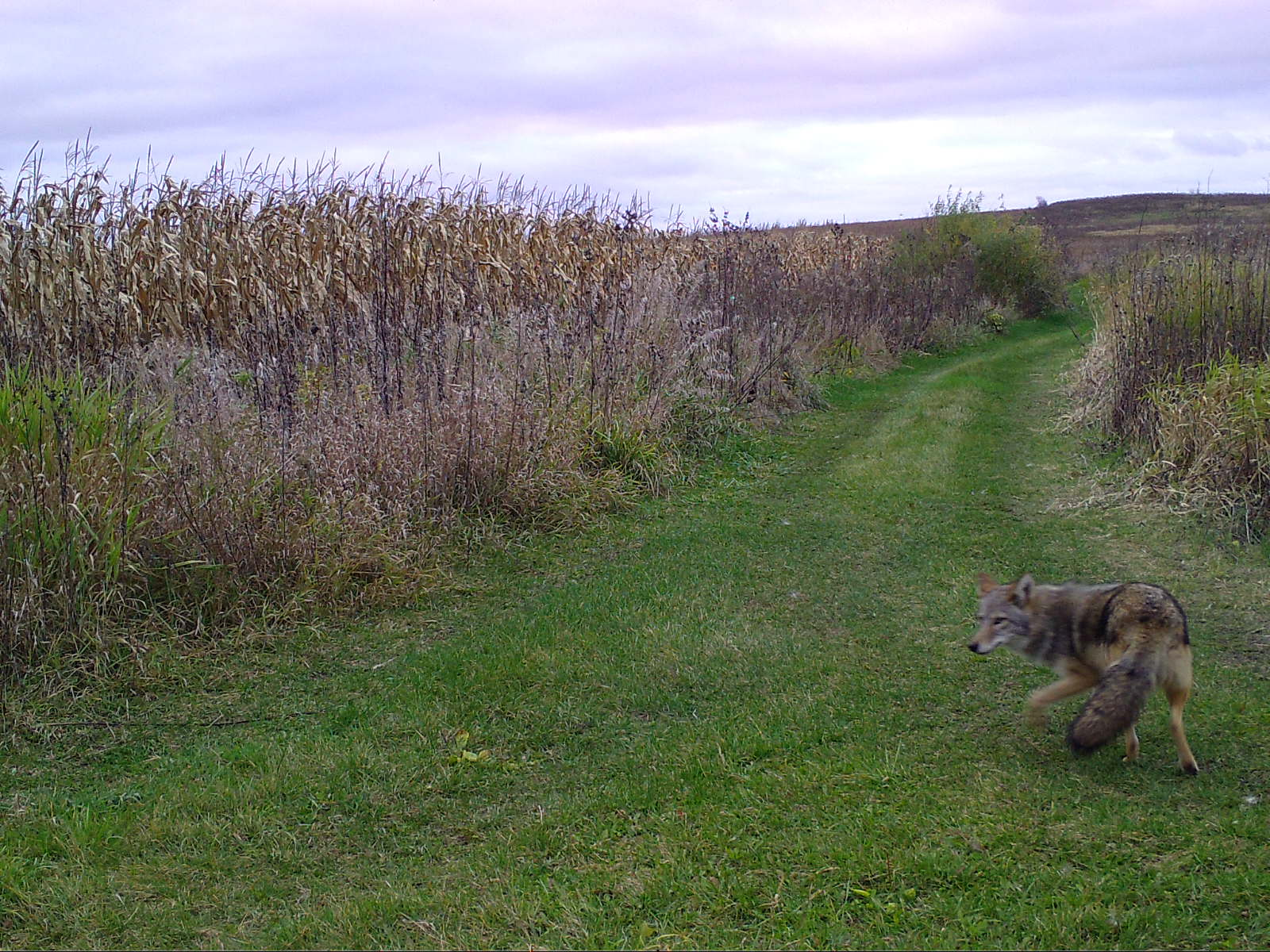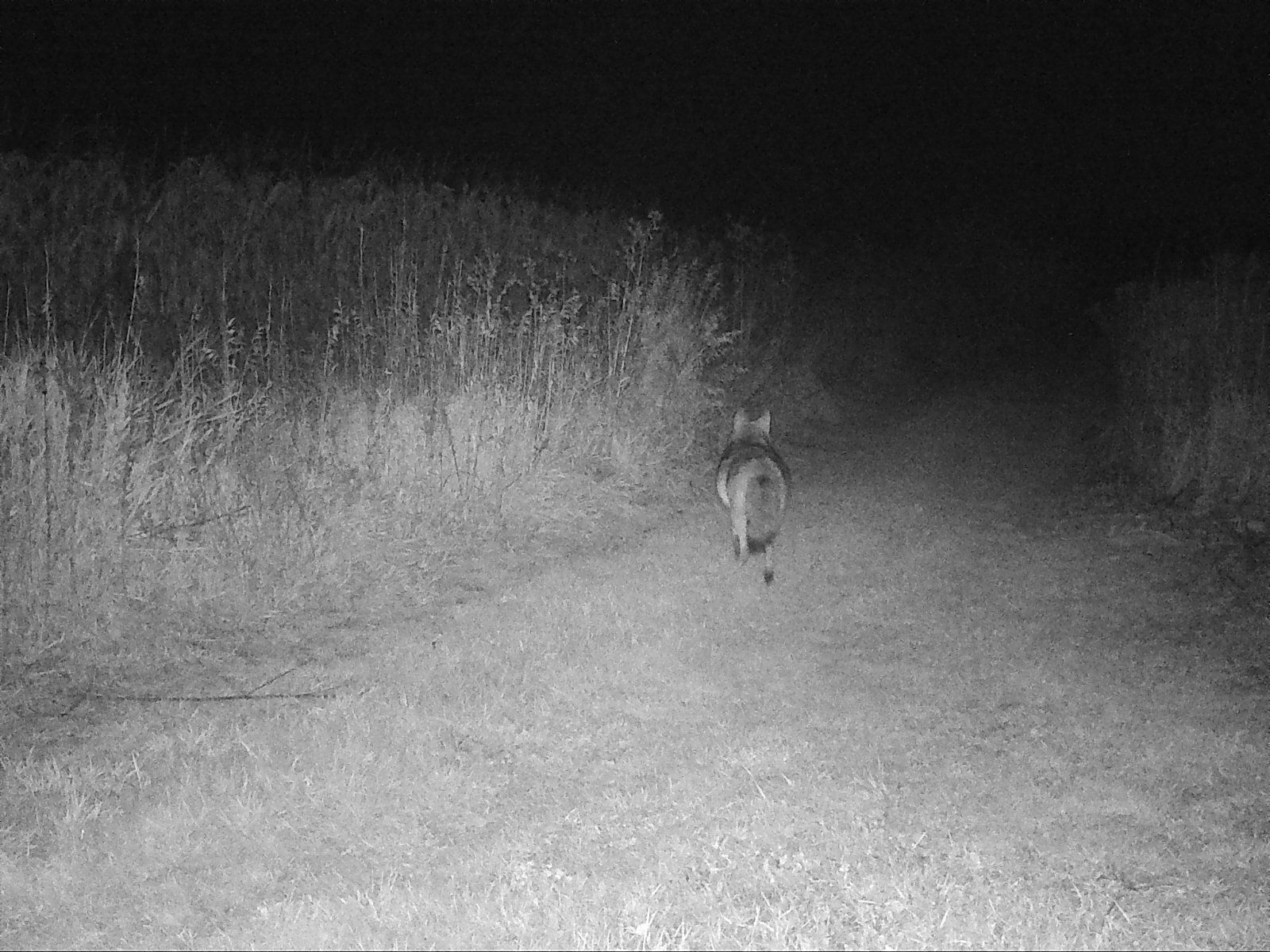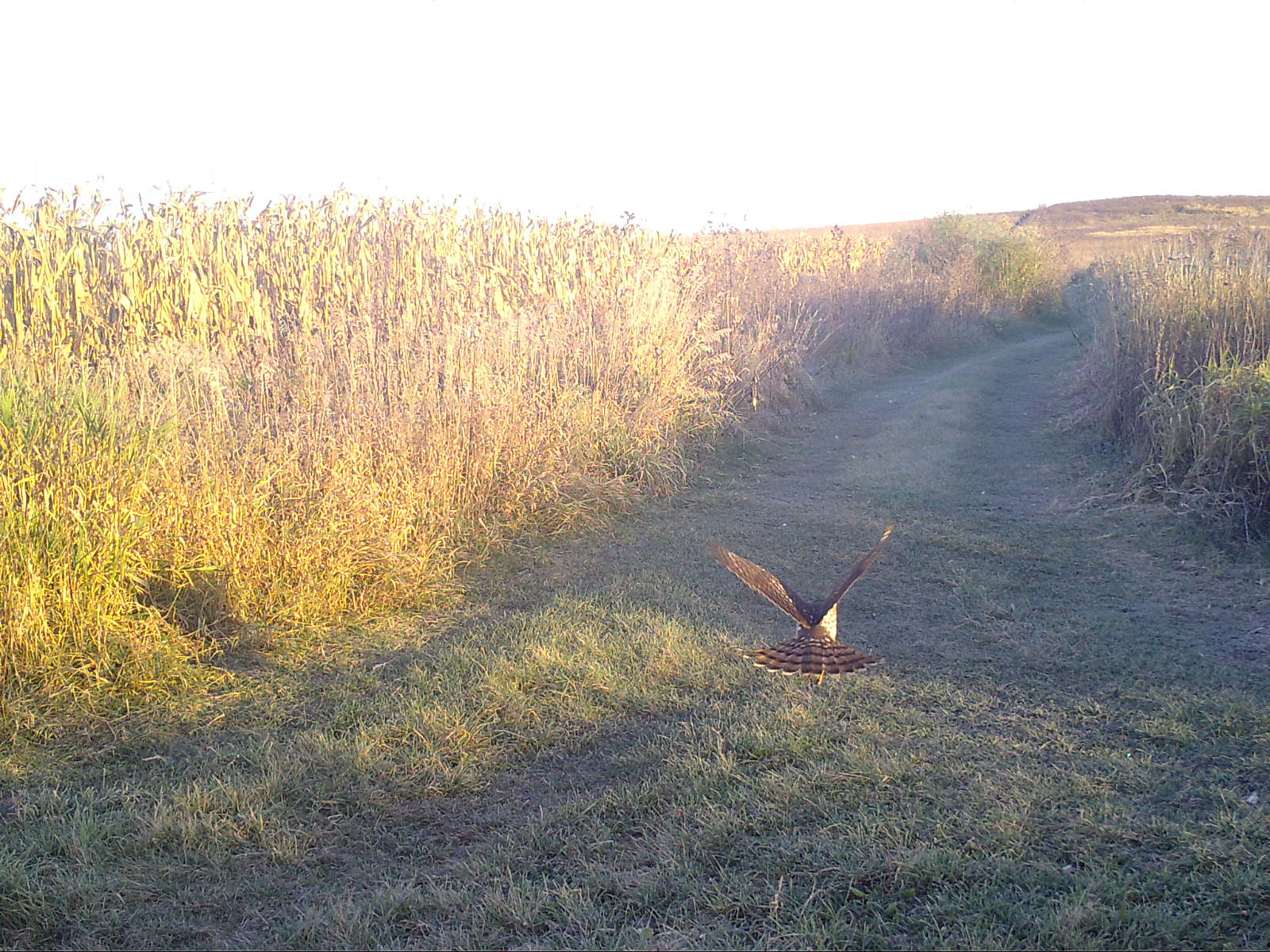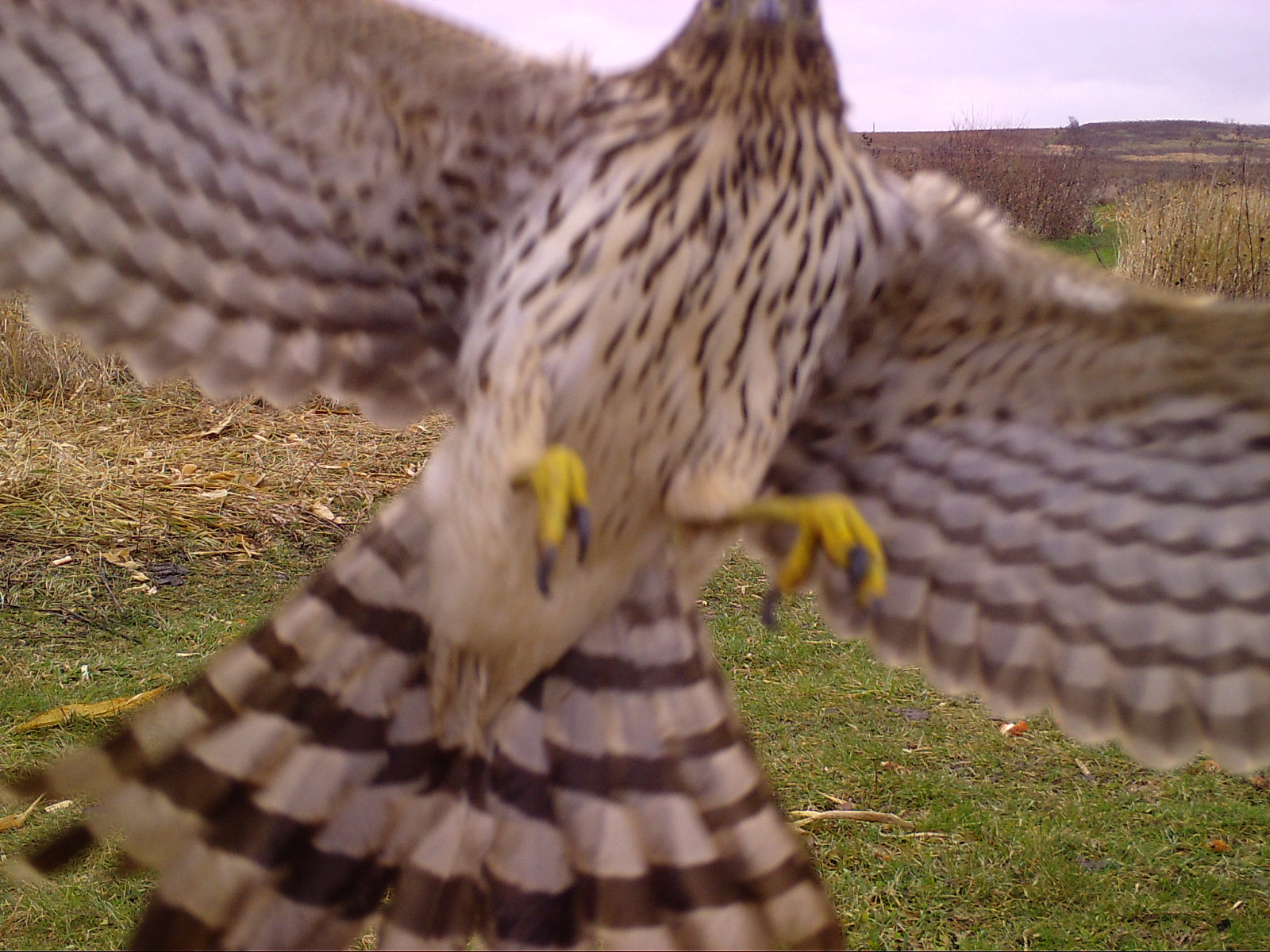Tundra swans and Canada geese sleep on the ice at Goose Pond (photo taken Nov. 10). Photo by Arlene Koziol
It’s not for nothing that our sanctuary is called “Goose Pond.” We are still in the midst of the great treat that is migration season and the ponds are covered in geese, swans (a record number of them at 1,194) and ducks. The fluttering, honking, quacking, splashing catches our attention at all times, even in the dead of night. We love to marvel at our waterfowl, but our 660 acres serve a great diversity of less conspicuous wildlife as well. One way to see and survey these sneakier species is to set up a trail camera.
Goose Pond Sanctuary's new camera trap, part of the Snapshot Wisconsin program. Photo by Maddie Dumas
This fall, Goose Pond Sanctuary signed up to participate in the Department of Natural Resources (DNR) “Snapshot Wisconsin” program. Trail cameras are distributed to volunteers around the state. The cameras are set up on on public or private land in areas where there are at least 10 contiguous acres of high-quality natural habitat. The cameras take motion-activated photos in a series of three and can store enough data to cover three months. Once the photos are uploaded, the volunteers monitoring the camera can go through them and classify by species (or flag blank or human photos). As a last step, and a check to the identification skills of the camera monitors, the photos are put online where volunteers all across the world can sign up to look through the photos and identify wildlife. All over Wisconsin, amazing photos are being taken of everything from porcupines, to bobcats, to bear, to cranes and so much more. Thanks to this program we have been able to get a glimpse of some of our more elusive Goose Pond Sanctuary dwellers, particularly mammals.
Some of you may be surprised to know that prairie restorations are a great home for deer. Our camera took 426 photos of deer in October and November. At least 50 photos of bucks, including three 10-pointers that Mark refers to as “delk” (deer + elk for their massive size!), roam the sanctuary. We estimate a population of seven or eight bucks is found around the west pond, and at least twice as many antlerless deer. Without the common woodlots that shelter many deer in the farm country of southern Wisconsin, our deer can sometimes be seen melting into the shadows of sandbar willow clones near the pond, or hiding in plain sight in the tall prairie grasses.
Click on the photos below to advance the slideshow.
Coyotes were the second most commonly photographed species on our trail camera with 156 photos. A flurry of coyote activity on the night of October 19 may be related to a deer carcass about a quarter mile northeast of the camera. At least one of the coyotes appeared to be well-fed, with a big swinging belly that reminded me of the many smaller mammals that we weren’t capturing as often on the trail camera. Unlike deer, I rarely see a coyote out here, but I hear them yapping at night in a wonderfully wild way.
Click on the photos below to advance the slideshow.
One of our most unusual photographs was of a muskrat. Muskrats can be seen and photographed swimming in the pond, or darting across Goose Pond Road, but they are rarely seen in the upland area. Our trail camera is positioned a quarter mile west of the pond where three trails intersect. The muskrat lumbered past the camera on the evening of November 1st, probably displaced from the pond by the destruction of 62 muskrat houses that were built a few weeks earlier in the open water of the west pond. The waterfowl use muskrat houses for resting, and throughout the course of the migration season their trampling and wave action reduce the houses down to nothing. It does not help that the houses are built with arrowhead plants that are not very durable. This “runner rat” may have been looking for a new home, but it might find trouble in the form of a coyote before it reaches new waters.
A muskrat looking for a pond that is less crowded. November 1 , 2017
Our favorite photo was one of those rare shots that can only come from trail cameras. Actually part of a series of photos of a Cooper’s hawk taken on three different days, the best one of the group shows a Cooper’s hawk flying directly into the camera, followed by a series of photos of the ground as the bird perched on the camera and caused the angle of the lens to drop. This same bird came back on two other days in October and November, flying into the camera at least once more. Part of the mission of the Snapshot Wisconsin program is to gain deeper insight into animal behavior. It will be interesting to know how other birds of prey responded to the trail cameras!
Click on the photos below to advance the slideshow.
Other animals caught on the camera include striped skunks, Virginia opossums, cottontail rabbits, raccoons, and ring-necked pheasants. We also have badgers, turtles, weasels, turkeys, and other species at Goose Pond but have not yet captured them on camera. We do not expect to see any photos of red fox since coyotes kill them or drive them out of the area. We are excited to see what other interesting species, behaviors and numbers we may capture next!
Snapshot Wisconsin is one of the largest citizen scientist project in the state with 792 volunteers, 980 cameras, and over 16.5 million photos already! Anyone can get involved, either by signing up to monitor a camera (currently they are only looking for volunteers for specific counties), or by going online to view and identify wildlife in trail camera photos that have already been uploaded. Go to the DNR website here for more information: dnr.wi.gov/topic/research/projects/snapshot
Meanwhile, next time you’re out at Goose Pond, enjoy the waterfowl, and keep your eyes peeled for some of our furrier and quieter residents!
Written by Maddie Dumas, Goose Pond Sanctuary land steward




